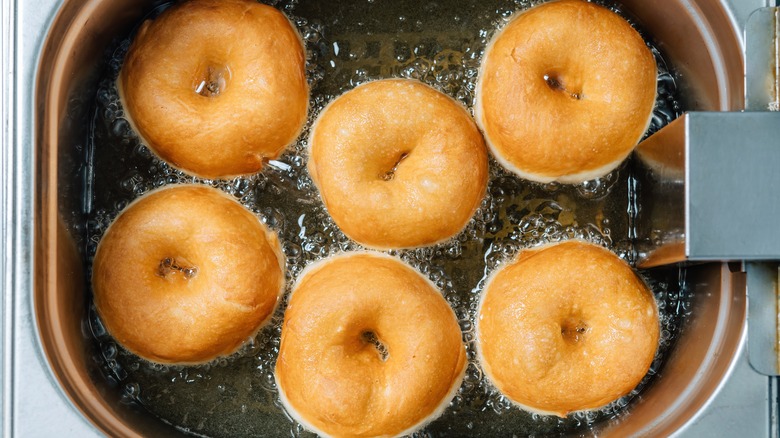There Is An Actual Reason Donuts Have Holes
Donuts are an American phenomenon, one that Smithsonian Magazine says traces all the way back to the first World War. In the trenches of France, American doughboys — a completely unrelated nickname given to foot soldiers during the Civil War — were brought the tasty treats as a reminder of home. When the millions of soldiers returned, their donut cravings ensued. Adolph Levitt, a Russian baker in New York City, found a way to fulfill their hunger with the invention of the first donut-making machine that churned out about 75 dozen donuts an hour. Today, those machines are more refined, making 800 dozen each hour and over 10 billion per year.
From jelly-filled to chocolate-sprinkled and from old-fashioned to apple cider, there are many different types of donuts served out of over 13,000 shops, per USA Today. Everyone has their favorite donut, but there's a question that still looms in the minds of fans and aficionados everywhere: Why do they have holes?
To ensure even cooking
There are a few different stories that have been used to theorize the donut's empty center. Some believe that, due to their timely popularization with bagels, the holes were made so that they two could be sold similarly — that is, stacked on long sticks or strung on ropes (via HTN). Another common theory credits a 16-year-old American seafarer by the name of Hanson Gregory with inventing the donut's hole. Sent to sea during the mid-19th century with his mother's deep-fried dough recipe, per Smithsonian, Gregory wasn't happy with how the centers came out greasy and doughy. So, he cut them out.
This story holds up with experts, who Wonderopolis claims say it makes sense because of how donuts are cooked. Because donuts are fried in hot oil, the outsides and edges cook the fastest, and the only way to cook the center through would be to keep the doughnut in the hot oil for longer. However, this would lead to a burnt outside. It seems that, before Captain Gregory's discovery, the choice was one or the other: a gooey donut or a burnt one. But, by cutting out a hole in the center, the ideal donut was achieved — one where the inside and the outside were able to cook evenly.
You can thank Gregory while you're visiting the best doughnut places across the U.S.

